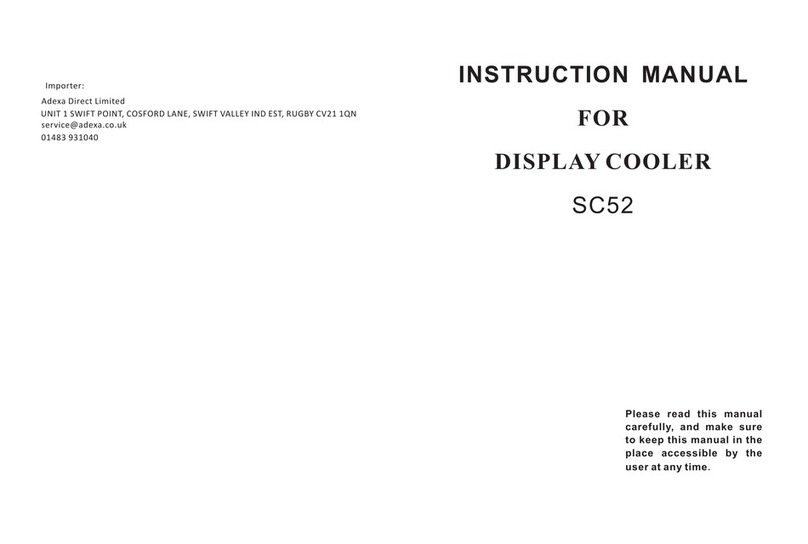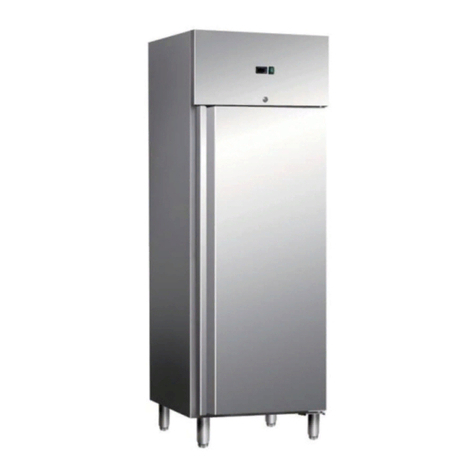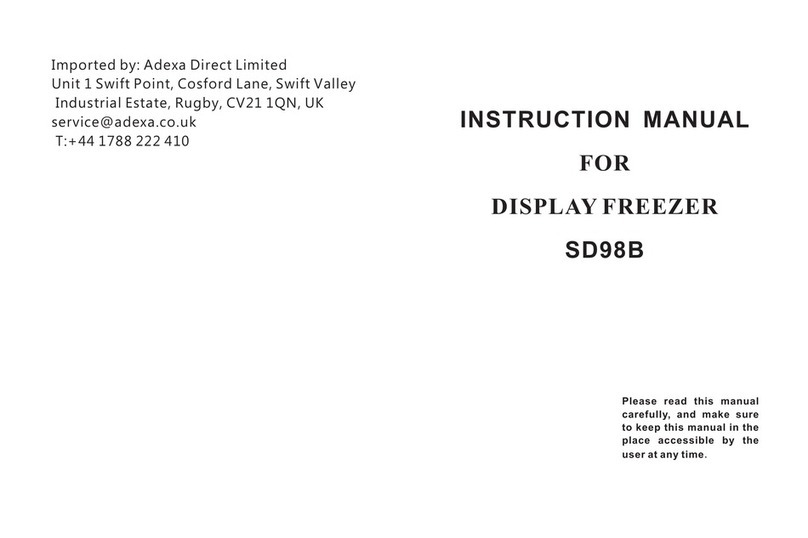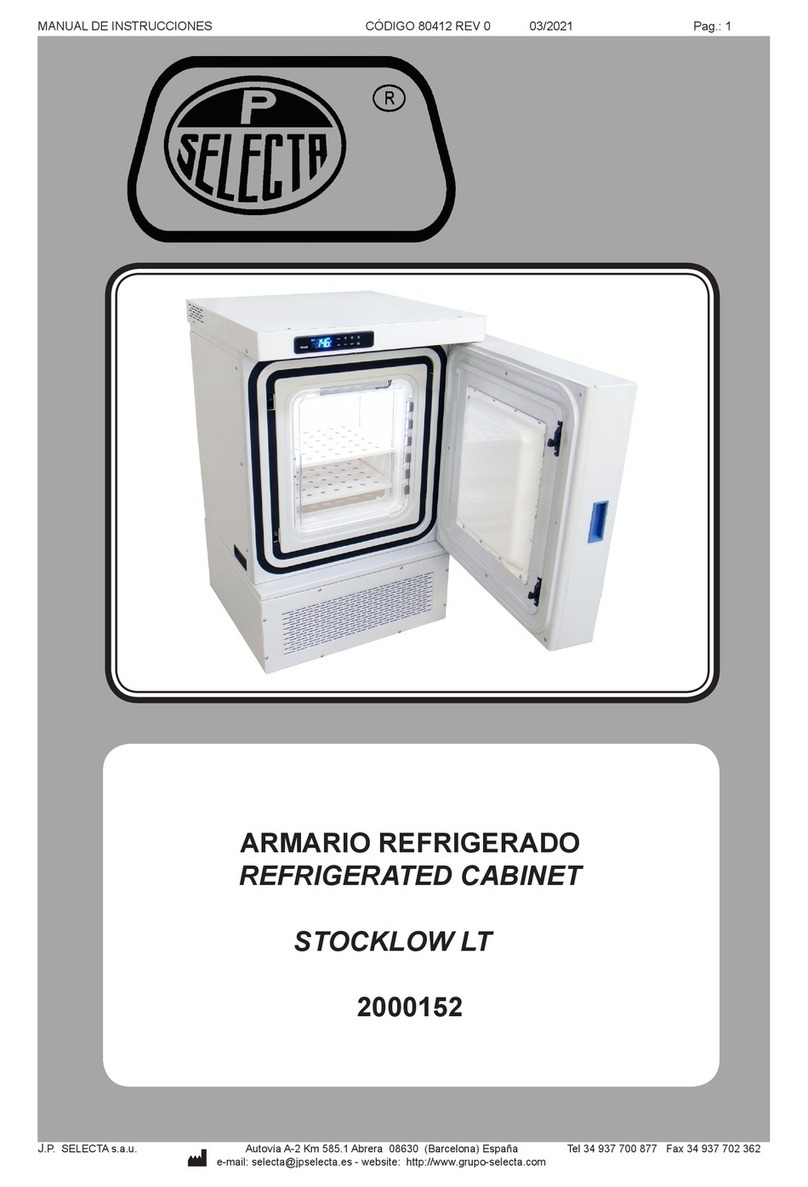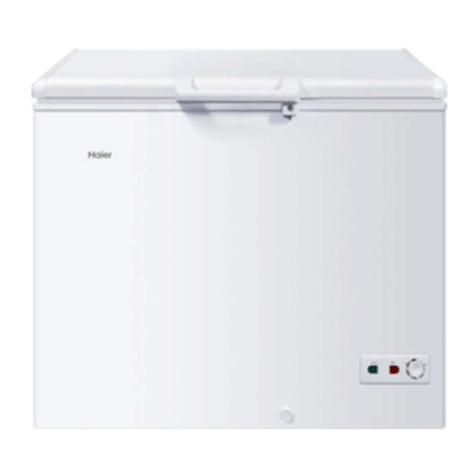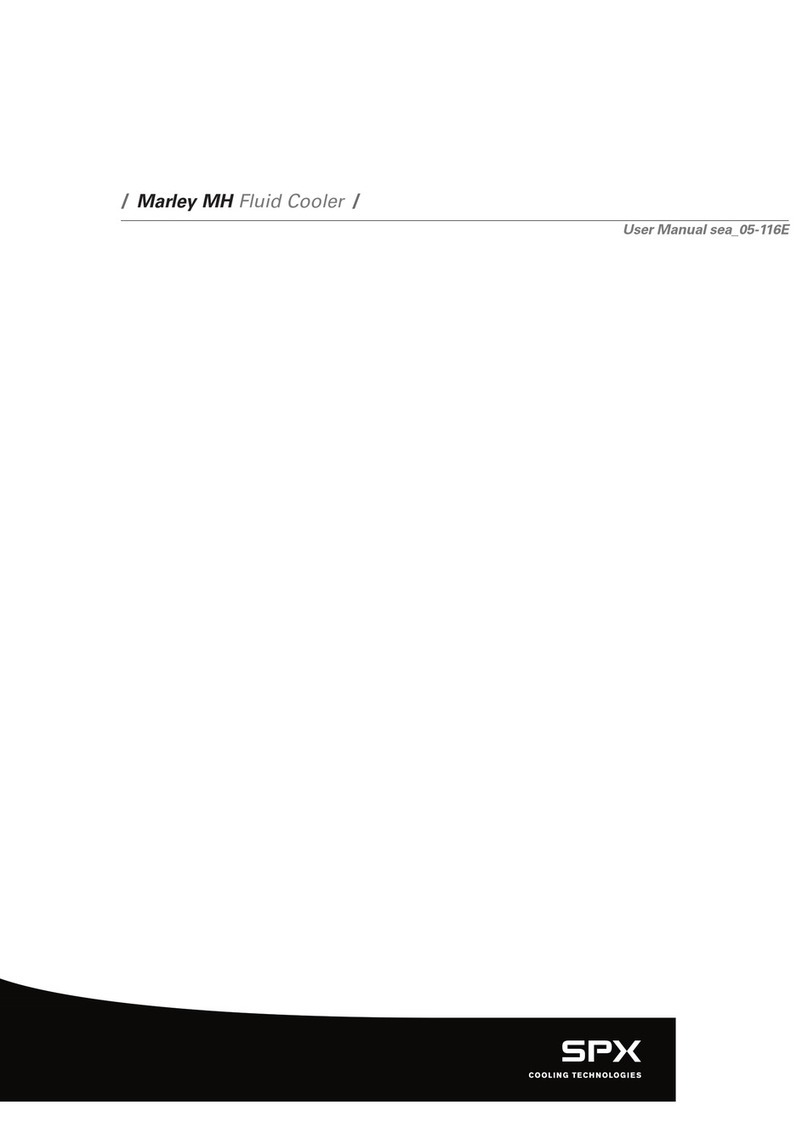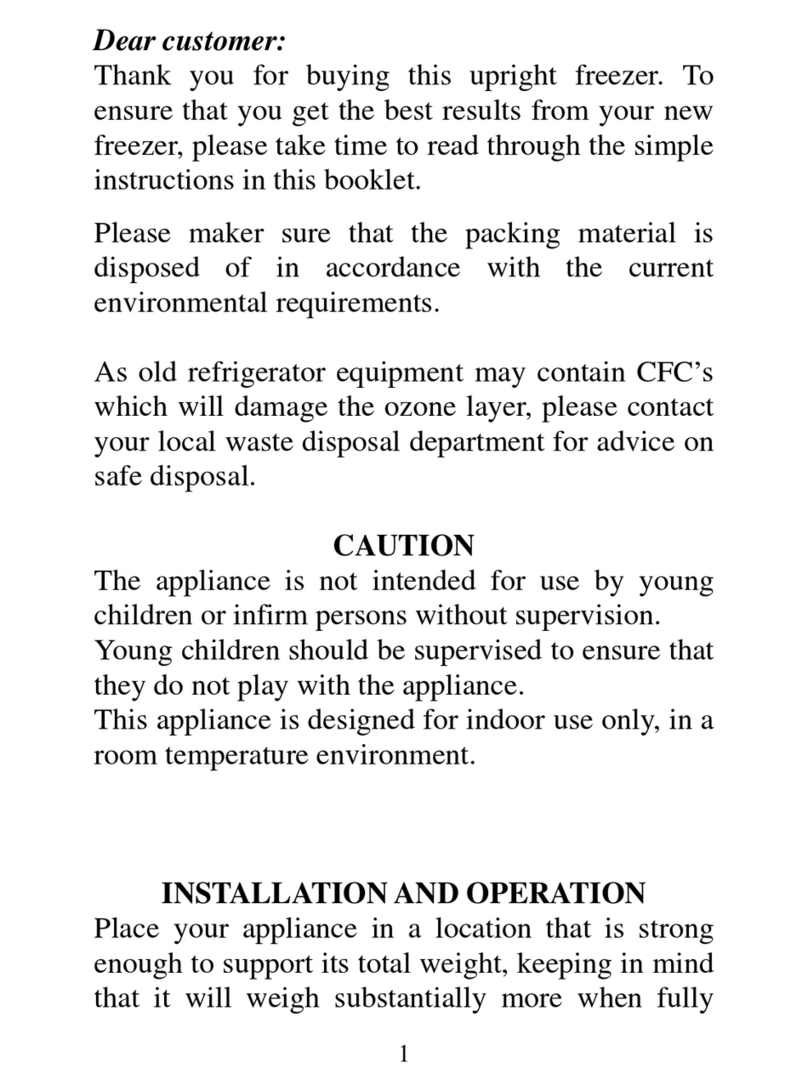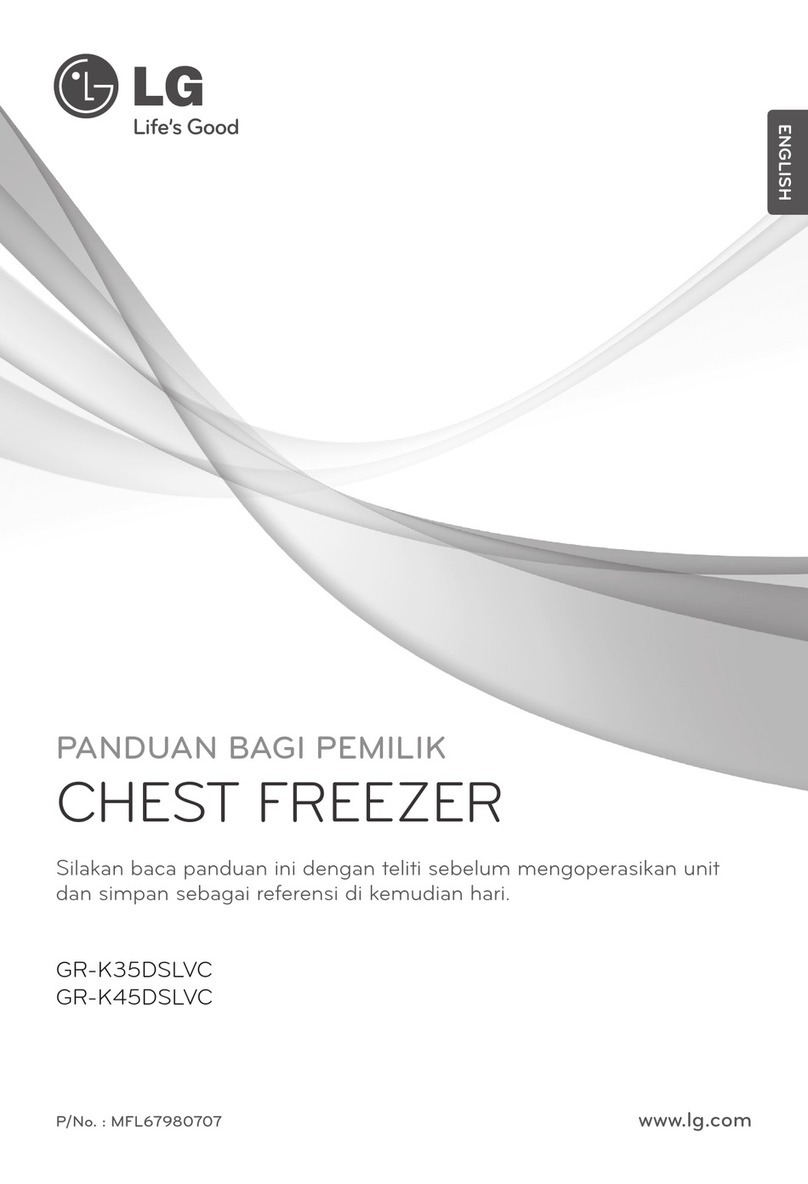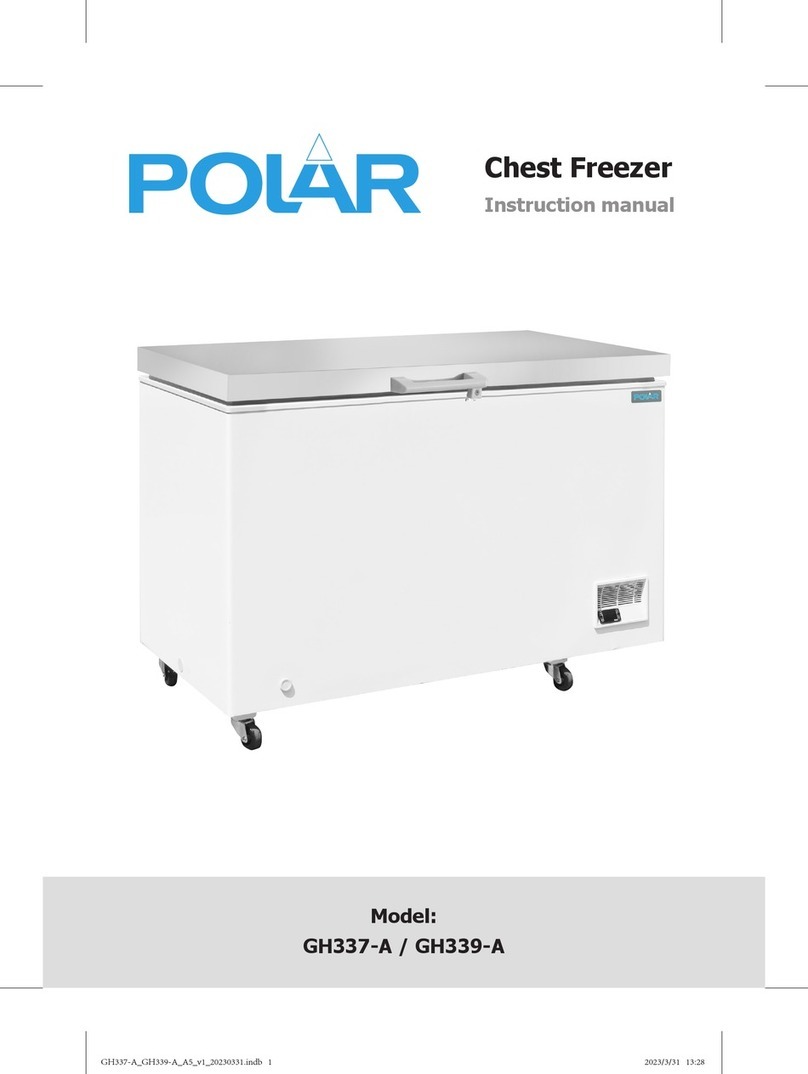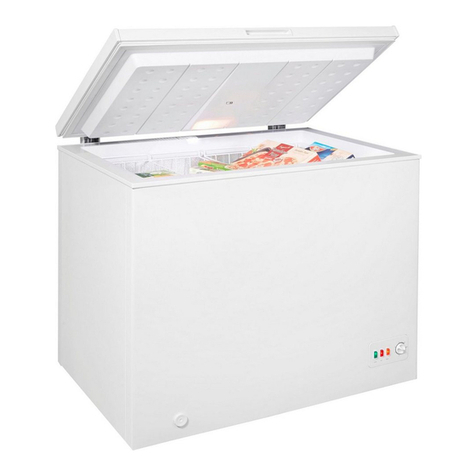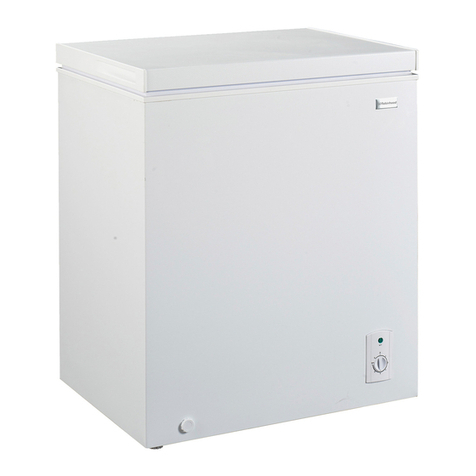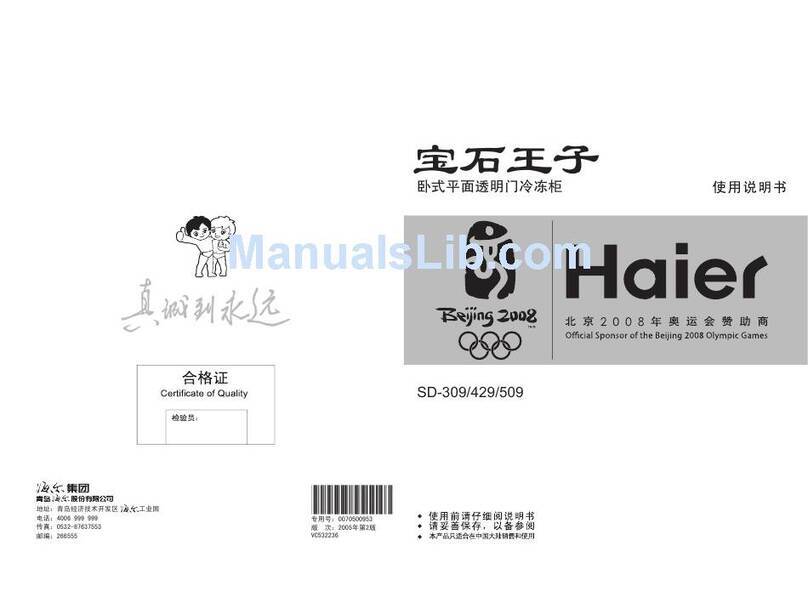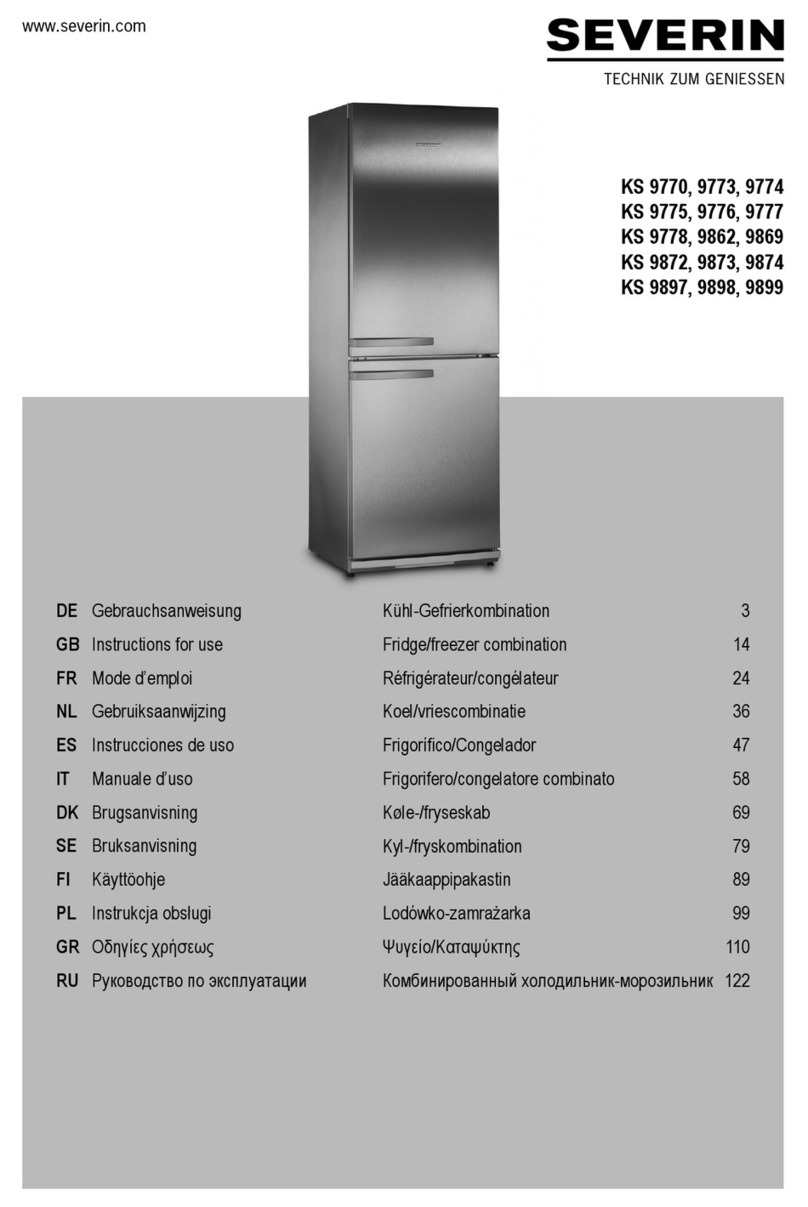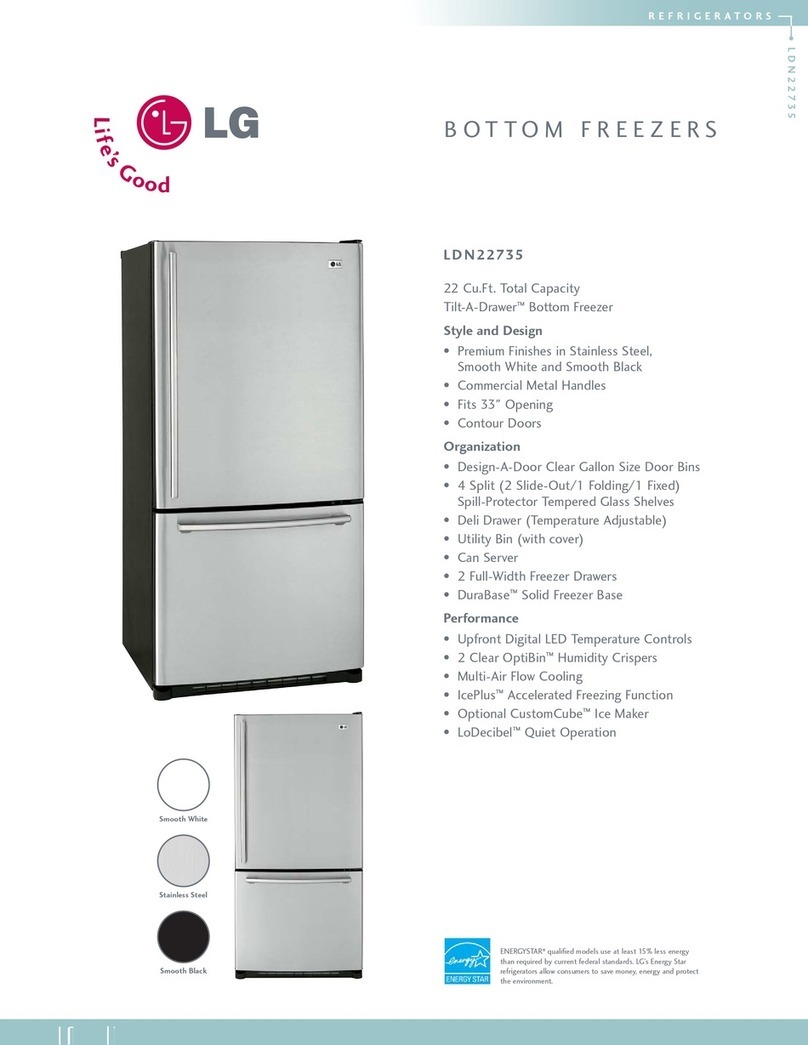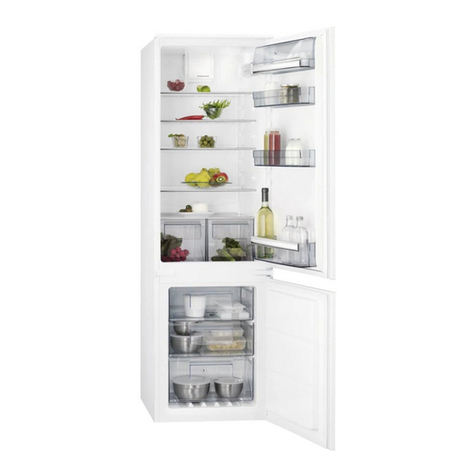Adexa AX85NX User manual

UPRIGHT FREEZER
MODEL: AX85NX
USER MANUAL

TABLE OF CONTENTS
Safety precautions
Installation and connection
Product description
Setting the operating temperature
Storing frozen foods
Cleaning the refrigerator
Troubleshotting guide
Declaration of conformity
Disposal
-02-
-03-
-04-
-05-
-06-
-07-
-08-
-09-
-10-

1. Temperature Control
3. Bottom slide-out drawer
2. 2 x Slide-out drawers
4. Adjustable feet

1
Dear Customer
Thank you for choosing a Adexa product.
The Adexa products have been produced to ensure the consumer has a product with
the highest standards of quality, functionality and design. We are sure you will be happy
with this appliance.
Your new appliance is designed exclusively for domestic use.
To ensure best use of your appliance, carefully read the instructions handbook which contains a
description of the appliance and advice on storing and preserving food.
Keep this handbook for future reference and pass them on to whoever might acquire
the appliance at a future date.
Before using the appliance
1. After unpacking, make sure that the appliance is undamaged, and that the door closes
properly. Any damage must be reported to your dealer within 24 hours after delivery of
the appliance.
2. Wait at least two hours before switching the appliance on in order to ensure the
refrigerant circuit is fully efficient.
3. Installation of the appliance and electrical connections must be carried out by a qualified
electrician, in accordance with the manufacturer's instructions and local safety
regulations
4. Clean the inside of the appliance before use.
Special Instructions
If this appliance is to replace an old refrigerator with a lock, break or remove the lock as
safety measure before storing it, to protect children playing with the fridge that could result
them being locked inside.
Old refrigerators and freezers contain insulation gases and refrigerant, which must be disposed
of properly. Please ensure that the refrigeration tubing is not damaged.
Warning: This refrigerator contains isobutane (R600a); this refrigerant gas is
CFC-free but combustible. When transporting, installing, cleaning and
repairing the refrigerator, take care not to damage any parts of the
refrigeration circuit to prevent the risk of gas leaks. In case of damage, do not
use naked lights and ventilate the room containing the appliance appropriately.

EU
2
Safety Precautions
The manufacturer declines all responsibility in case of failure to comply with the following
precautions:
•Never put a damaged appliance into operation, if in doubt, contact your service provider on
01759 487827.
•The appliance must be installed and connected to the electrical mains in full compliance
with the instructions provided in the handbook. The electrical connection conditions must
be as specified on the nameplate. The appliance's electrical safety is only guaranteed if the
household electrical system is earthed in accordance with the relevant regulations.
•Make sure that all repairs and servicing are only carried out by a qualified technician.
Always disconnect the appliance from the electrical mains in case of breakdown and
maintenance, when changing light-bulbs or during cleaning. Never defrost using electrical
devices or steam cleaners. Never remove frost or ice with sharp items, as this may cause
irreparable damage to the walls of the refrigerator.
•Never attempt to move the refrigerator by pulling on the door or the handle.
•High-alcohol drinks must only be stored sealed and vertical. Never store liquids in cans or
glass containers in the freezer compartment, especially if they contain added carbon
dioxide. Never store products containing gases, flammable propellants or explosive
substances in the freezer. There is always an explosion hazard!
•The use of electrical appliances (such as ice-cream makers or whisks) inside the appliance is
forbidden.
•To ensure the refrigerator operates correctly, never obstruct or cover the air ducts in any
way.
•Never touch frozen products taken straight from the freezer or put them in your mouth.
There is a burn hazard due to the very low temperatures.
•Never eat or drink foods which look or smell strange.
•This appliance can be used by children aged from 8 years and above and persons with
reduced physical, sensory or mental capabilities or lack of experience and knowledge if
they have been given supervision or instruction concerning use of the appliance in a safe
way and understand the hazards involved. Children shall not play with the appliance.
Cleaning and user maintenance shall not be made by children unless they are older
than 8 years and supervised.
•Children must be supervised to ensure that they do not play with the appliance.
•In case of electricity blackout, open the door(s) as little as possible. Once partly or
completely thawed, frozen foods must not be re-frozen.

EU
3
Intended use
This appliance is a compressor refrigerator, designed for the short-term storage of food
in the main cabinet and long-term storage of food in the freezer compartment.
This appliance is intended for domestic or similar applications, such as in:
–shops, offices and other similar working environments,
–agricultural areas,
–hotels, motels etc. and similar establishments,
–bed and breakfast type environments.
This appliance is not intended for commercial use, nor for use in the catering business or
similar wholesale environments.
Warning: The manufacturer declines all responsibility for injury or damage
caused by failure to comply with the above regulations or deriving from
tampering with even just one part of the appliance and the use of non-
original spare parts.
Installation and connection
Choosing the site
•Always place the refrigerator in a dry place with satisfactory ventilation. Never expose it to
direct sunlight or install it outdoors. Depending on its climate class (stated on the
nameplate inside the refrigerator compartment), the appliance can be used in different
temperature conditions:
Class
Ambient temperature
SN (Subnormal)
from +10°C to +32°C
N (Normal)
from + 16° C to + 32° C
ST (Subtropical)
from + 16° C to + 38° C
T (Tropical)
from + 16° C to + 43° C
•Never place the refrigerator close to heat sources. If this is unavoidable, a suitable
insulating panel must be used to allow the appliance to function properly. Otherwise, place
the appliance at least 3 cm from electric or gas cookers and at least 30 cm from
combustion or radiation heating systems.
•To allow proper cooling of the condenser, the refrigerator must not be placed too close to
the wall. If the refrigerator is installed underneath a wall cupboard, the distance between
the two must be at least 5 cm.

Eh
4
•Take care not to scratch or damage the floor when installing the appliance on parquet or
linoleum. If necessary, when positioning slide the refrigerator over pieces of wood or a mat
to the point decided for connection to the electrical mains.
Positioning and ůĞǀĞůŝŶŐ the appliance
Place the refrigerator on a stable and level floor. In case the floor is not perfectly level, use the
two adjustable feet on the front ĐŽƌŶĞƌƐ of the fridge. To ensure major stability, easier
movement and a correct positioning of the product, two additional wheels are present at the
rear. In any case we recommend moving the fridge very carefully in order to avoid floor
damage (especially in case of wooden floor).
Electrical connection
Before switching the refrigerator on for the first time, leave it vertical for at least two hours.
Then connect the appliance's power supply lead to a mains socket with earth contact, installed
in accordance with electrical safety regulations. The rated voltage and frequency are stated on
the nameplate. The appliance must be connected to the electrical mains and earthed in
compliance with the relevant regulations and requirements. The appliance is able to withstand
short fluctuations in voltage of no more than 15% less or 10% more than the rated voltage
stated on the nameplate. If the power supply lead has to be replaced, this operation must only
be carried out by a qualified technician. The socket must be accessible after the appliance has
been placed.
Product Description
Before using for the first time
–Remove any exterior and interior packaging materials completely, including the adhesive
strips.
–Before it is connected to the mains, the unit must be thoroughly checked for transport
damage, including its power cord.
–Clean the unit as described in the section Maintenance and Cleaning.
–To ensure proper functioning, wait for around 2 hours before connecting the unit and
switching it on once it has been positioned.
–When the unit is first switched on, a slight smell may be noticed. However, this will
disappear once the cooling process has begun.
1.
Temperature Control
2.
2
x Slide
-
out drawers
3.
Bottom s
lide
-
out
d
rawer
4.
Adjustable feet

EU
5
Arranging foods inside the refrigerator compartment
•Arrange the foods on the various shelves, taking care that they have an airtight wrapping
or cover. This precaution will:
-conserve foods' fragrance, moisture and freshness;
-prevent the cross-contamination of foods with different aromas and tastes;
-prevent the humidity level inside the refrigerator becoming too high because of the
normal breathing of food (especially fresh fruit and vegetables). In some operating
conditions (rise in ambient temperature and humidity, more frequent opening of the
door) this might cause condensation to form on the shelves.
•Use only containers approved for food storage. Always allow hot foods and drinks to cool
to room temperature before placing them inside the refrigerator.
•Never store explosive substances in the appliance and only store high-alcohol drinks firmly
sealed and vertical.
Setting the operating temperature
Important
:
Changes in weather conditions (temperature and humidity) and
the frequency with which the doors of the two
separate compartments are
opened may affect the refrigerator's operating temperatures.
Temperature Control
The temperature in the freezer is controlled by the thermostat control regulator in the upper
the freezer. Turn the thermostat control regulator with key attached up or down to r
egulate
the temperature inside the freezer. The markings on control regulator indicated the “
M
IN
,
MED
and
M
AX
” for the different temperature grades. The temperature decreases with
position
MIN
being the warmest and position
MAX
being the coldest.
Set the c
ontrol to the middle position
MED
for normal use, but you may set
the control to
other positions i
f you find the middle is too cold or too wa
rm.
Freezing foods
•
For proper storage and freez
ing, fruit and vegetables should be packed in portions of not
more than 1 kg and meat and fish up to a max.
of 2
kg. Small packages of food freeze more
quickly, giving better conservation of their nutrients and flavour, even after thawing and
preparation.
•
Use only freezer bags, aluminium film, food
-
approved polyethylene film and freezer
containers. Do not use paper bags,
non
-
food
-
approved cellophane bags, shopping bags or
used freezer bags.
•
Pack foods in airtight packs and try to expel all the air. If usin
g bags, close the packs with
the elastic bands or plastic
-
coated wire strips provided.

EU
6
•
Always cool hot foods to room temperature before placing them in the freezer and do not
allow frozen foods to touch fresh foods for freezing.
•
Always mark packs with the
date of freezing, quantity and type of food and make sure that
foods are fresh and in good condition.
Storing frozen foods
•
When purchasing frozen foods, always take care that the pack is not damaged, that the
product is not past its sell
-
by date and that
the thermometer of the freezer in which the
products are displayed for sale does not show a temperature above
-
18°C. Also note the
temperature advice, storage period and modes of consumption stated by the producer.
•
Purchased foods should also be protected
using suitable insulated containers during
transportation to eliminate the risk of thawing. An increase in temperature might reduce
their storage life and adversely affect their quality.
•
Do not purchase frozen foods which are carrying too much frost; they
might already have
been thawed
.
Thawing frozen foods
•
Partially thawed foods should be eaten as soon as possible. Low temperatures preserve
foods,
but they do not destroy the micro
-
organisms which are activated after thawing,
which may cause the stored foo
ds to deteriorate. If thawed foods smell and look normal,
they can be cooked and if required re
-
frozen once they have cooled.
•
Depending on their type and intended use, frozen foods can be thawed correctly at room
temperature, in the refrigerator, in an ele
ctric oven (conventional or fan), or in a
microwave oven using the relevant function.
Making ice
-
cubes
Fill the tray 2/3 full of water or any other liquid you wish to freeze. Place it in the freezer
compartment, making sure that its bottom is dry so that i
t will not stick to the shelf of the
compartment. To detach the ice
-
cubes, twist the tray slightly or place it under running water
for a few seconds
.
Defrosting
1.
When the refrigerator
is
working for a
long
period of time, the inner
surface of the chilled
room will be covered with a layer of white frost. It may raise the electricity consumption
and lessen the effect of refrigeration.
Then you should do frost removal
at once
.
2.
The refrigerator compartment has
semi
automatic defrosting.
T
he defrosting push button
(DEF) is in the centre of temperature control selector.
3.
While defrosting, press the button,
the
compressor ceases to
work,
and the temperature
rises +5
-
+8
°
C
. Defrosting button resto
res automatically, the circuit is
on again and th
e
compressor works.
4.
After defrosting, clear away defrosting water in
drip tray
as soon as possible
.

EU
7
Maintenance and Cleaning
Warning
:
the amount of ice which forms on the back wall may vary with
changes in weather conditions (temperature and humidity), the frequency
with w
hich the door is opened, the appliance's operating temperatures and
the amount of fresh foods stored inside (especially fruit and vegetables).
Cleaning
•
Before cleaning, disconnect the plug from the electrical mains. Clean the outside usin
g only
water and a gentle liquid detergent or an ordinary detergent for washable surfaces (such
as a window
-
cleaning product). Never use products containing abrasives or substances
which may attack the lacquered or painted parts, acids or chemical solvents
. Use a sponge
or a soft cloth.
•
Do not use steam cleaners to clean the inside;
•
Remove the shelves and accessories, taking care not to apply excessive force when
removing. Never wash removable plastic parts in the dishwasher; use only warm water and
washing
-
up liquid or water and vinegar. Take care not to wet the electrical lighting
components with water or detergents.
•
Clean the gaskets with warm water and then dry.
•
To allow the refrigerator to operate at full efficiency, periodically also clean the condense
r
on the rear with a brush or a vacuum cleaner.
•
Also make a periodic check on the tray above the
compressor and
clean it if necessary.
Practical advice for saving energy
•
Install the
freezer
in a cool, well ventilated place, protected against d
irect sunlight and well
away from heat sources.
•
Do not place hot foods in the
f
reezer sections. Wait for foods to cool to room temperature
before placing them on the shelves;
•
Open the door(s) as infrequently and for as short a time as possible to prevent t
he
compartments from warming up too much;
•
Clean the condenser (rear of the
freezer
) periodically to prevent the appliance from losing
efficiency;
•
If the
freezer
is to be out of use for a long period, it is bes
t to empty it and switch it off.

EU
8
Troubleshooting Guide
Temperature inside the compartments is not low enough.
•Is food preventing the doors from closing properly?
•Is the thermostat setting correct?
•Are the air circulation vents blocked?
Temperature inside the refrigerator compartment is too low.
•Is the thermostat setting correct?
The appliance is excessively noisy.
•Has the appliance been installed correctly?
•Are the pipes at the back touching or vibrating?
•It is normal to hear the noise of the refrigerant liquid in circulation.
The appliance is not working?
•Is there a power failure?
•Is the plug properly inserted in the socket?
•Has the fuse blown?
•Is the power cord damaged?
Water collects at the bottom of the refrigerator compartment.
•Is the thermostat setting correct?
•Is the defrost water drain blocked?
Door Reverse
This refrigerator has been built with the door hinges on the right. If you want to change the
opening direction, please follow the instruction below.
WARNING: When reversing the door, the appliance must not be connected to the mains.
Remove the plug from the mains beforehand.
1. Remove the hole cover. (Fig. 1)
2. Remove hinge cover and top hinge with a “+” screwdriver, then remove the door. (Fig.2)
3. Remove the foot and bottom hinge, fix them to opposite side. (Fig.3)
4. Put on the door to bottom hinge, then fix top hinge and cover. (Fig.4)
5. Fix the hole cover, completed. (Fig.5)

Fig.1 Fig.2
Fig.3 Fig.4
Fig.5

EU
9
Declaration of Conformity
This appliance is intended for storing f
ood and is manufactured in conformity with European
Regulation
1
0
-
2011
and European
regulation (EC) No. 1935/2004.
This product has been designed, manufactured and marked in compliance with:
-
the safety ob
jectives of L
ow voltage Directive 20
14
/
35
/E
U
;
-
the p
rotection requirements of EMC Directi
ve 20
1
4/
3
0/E
U
;
-
Materials intended to come into contact with foodstuffs
-
Regulation
10
-
2011
.
-
Commission
Regulation (EU) No. 1060/2011 & C
o
mmission
Regulation
(EC) No. 643/2009
The electrical safety of the appliance is g
uaranteed only if it is connected to an efficient and
approved
earthing
system.

EU
10
Disposal –Environment policy
Packaging
The packaging material is entirely recyclable and marked with the recycling symbol.
Follow local regulations for scrapping. Keep the packaging materials (plastic bags,
polystyrene parts, etc.) out of reach of children, as they are potentially dangerous.
Disposal
The appliance is manufactured using recyclable material.
This appliance is marked according to the European directive 2012/19/UE on Waste Electrical
and Electronic Equipment (WEEE).
By ensuring this product is disposed of correctly, you will help prevent potential negative
consequences for the environment and human health, which could otherwise be caused by
inappropriate waste handling of this product.
This symbol on the product, or on the documents accompanying the product,
indicates that this appliance may not be treated as household waste. Instead it
shall be handed over to the applicable collection point for the recycling of
electrical and electronic equipment.
Before disposal, make the appliance unusable by cutting off the power cable and
removing the doors and shelves so that children cannot easily climb inside the appliance.
Disposal must be carried out in accordance with local environmental regulations for waste
disposal. Deliver the appliance immediately to an authorized dump; do not leave it unattended
even for a few days, since it is potentially dangerous for children.
For more detailed information about treatment, recovery and recycling of this product, please
contact your local city office, your household waste disposal service or the shop where you
purchased the product.
Adexa Direct Limited
UNIT 1 SWIFT POINT
COSFORD LANE
SWIFT VALLEY INDUSTRIAL ESTATE
RUGBY CV21 1QN UK
Table of contents
Other Adexa Freezer manuals
